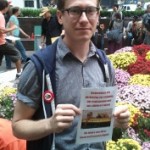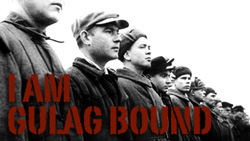The US’ largest Marxist organization Democratic Socialists of America is moving to infiltrate and direct the Occupy Wall Street Movement into a more organized and socialist focused protest movement. DSA is working hard to sustain ‘Occupy’ over the winter in readiness for a major “spring offensive” largely directed at Republican controlled state capitols as they struggle to address massive budget problems.
The Occupy movement forced the media talking heads to take a break from their obsessive concern with a recession-induced budget deficit to acknowledge the devastating social effects of 30 years of rampant growth in inequality…
But will this shift in political focus continue? Only if DSA activists and other progressives help Occupy sustain itself over the winter. Come late winter and early spring, the fight over proposed state and local budgets will reinvigorate the disastrous elite narrative that we must “cut” our way out of the recession.
As brute state force, combined with harshwinter weather, forces Occupy out of its public encampments, the move inside may give it time for self reflection and to plan a spring offensive. ..
In the coming months, Occupy will have a unique opportunity to link up with community groups and state and local employees fighting another vicious round of budget cuts.
Occupy has implicitly advanced another big demand: that the economy serve human needs rather than human beings serving the needs of economic elites. As federal, state, and local budgetary policies reflect the contours of power in society, if Occupy this spring joins the fight for humane state, local, and federal tax, spending, and investment policies, it will be challenging the distribution of power in our society…
This spring Occupy should move to the front lawns and rotundas of state capitol buildings to demand a change in state budget policies – and to demand federal government aid to states and localities.
“Occupy” has been a huge focus of DSA activity in recent months, a commitment that shows no sign of waning.
At DSA’s November 2011 biennial conference in Washington DC, delegates passed a resolution confirming their commitment to the OWS movement, while “suggesting in the spirit of solidarity,” a slate of “political demands” for the anarchic movement – all conveniently in line with current DSA policy.
The first offered direction on how DSA should support the Occupy Wall Street movement. Delegates approved continuing to embrace the movement, as DSA members have done without hesitation nationwide, while suggesting in the spirit of solidarity a series of political demands that could give the movement a coherent political orientation.
These included a public jobs program; bank nationalization; Medicare for all; the forgiveness of student debt; an end to foreclosures; substantial investment in clean energy; a progressive income and corporate tax structure; a tax on all speculative financial transactions; and the immediate enactment of worker-friendly labor law reform legislation.
Winter has set in. Police have dismantled the Occupy Wall Street encampment in New York and raided encampments around the country…
DSA and our allies need to hunker down for the winter and plan for the long haul. Now is the time to organize! Occupy must sustain its amazing energy, perhaps in a different form, and build toward a spring offensive that will take the fight straight to the 1%.
DSA will do its part by engaging in a number of activities in the coming months. Locals around the country will fight state and local budget cuts supported by Republicans and far too many Democrats.I call on every DSAer to take responsibility for recruiting at least one new member, and to participate in whatever Occupy actions might be happening in your community this winter (if there isn’t one, organize it!).
“It’s also true that when I say I think we may be on the cusp, at the beginning of a another period of social protest and [Occupy Wall Street] is the sign, I don’t think that social protest works as a little explosion and gets bigger and bigger and bigger and bigger. It doesn’t happen that way. It’s much more interrupted, dispersed, there are periods of discouragement – 1959-1960 the civil rights movement people thought it was over, after 1962 in Albany, Georgia – this movement is going to be like that too.”
Maisano then goes on to propose the “next phase of the struggle“:
As mayors and police forces move in an apparently coordinated fashion against Occupy encampments in cities around the country, we would do well to keep Piven’s sage advice in the back of our minds. It would be easy to interpret the wave of evictions as a defeat, as cause for depression, demoralization, and demobilization. But such a pessimistic assessment couldn’t be more misguided.
The Zuccotti Park encampment in lower Manhattan and its offshoots around the country were enormously successful. They served their purpose, and it’s time to move on to the next phase of the struggle. In a certain sense eviction from the park may be a good thing, particularly if it forces the movement to continue and expand its community outreach efforts; take up specific demands and deepen its involvement in local struggles (particularly around foreclosures/evictions); and establish new occupations in institutional settings like college campuses or – dare we hope? – workplaces…
While the 1% and its political allies may take heart in the wave of evictions, the genie is out of the bottle and it won’t be jammed back in. The processes that began in and around the encampments will not come to a halt, especially when we consider the fact that most of the important organizing is now done by working groups operating primarily outside those specific physical spaces.
If unions and community groups continue to offer activists spaces and staging areas to use over the winter, then we will almost certainly see a resurgence of the movement in the spring, when states and cities around the country will propose another round of massive cuts to education, health care, and other critical public services that will put masses of people into motion. The occupation and defense of public spaces will be complemented by the occupation and defense of public services – schools, libraries, firehouses, community centers – a turn which could have the added benefit of broadening the social composition of the movement and giving it deeper roots in local communities.
Maisano goes on to invoke the name of Marxist revolutionary Rosa Luxemburg, as he reveals that “Occupy” is destined to become a much broader social movement – one that may be around for decades and one that most certainly has socialist revolution as its goal.
“Occupy” does not signify a specific encampment or even a specific tactic to be used in the course of mass struggle. Here, we should take inspiration and guidance from the writings of Rosa Luxemburg, who analyzed the nature of popular movements in The Mass Strike, her classic (and highly relevant) essay on the lessons of the first Russian revolution of 1905.
“It is absurd to think of the mass strike as one act, one isolated action,” she writes. “The mass strike is rather the indication, the rallying idea, of a whole period of the class struggle lasting for years, perhaps for decades.”
Change the phrase “mass strike” to “occupation,” and it becomes difficult to determine whether these words were written in 1906 or 2011. The interlocking political, economic, and social dynamics that summoned the occupations into existence and fuel the movement’s grievances will not, and cannot, be solved within the parameters of the present state of affairs.
The cause of the 99% is the rallying point for a generation, a movement worthy of our commitment, our struggle, and even our joy.
Our problems aren’t going away any time soon. Neither are we.
The mass protests of the 1930s and 1960s did not rise and fall in a year. They were grown, sustained and nurtured over several years by the communist and socialist’s movements of the day. They were directed at achieving certain social reforms and were relentlessly expanded by a core of committed Marxist cadre, until the bulk of their demands were met.
OWS will follow the same pattern. This is just the beginning. The big difference is that today’s activists will not be satisfied with liberal social reform. These people believe they can achieve full blown socialist revolution – the end of capitalism is within their grasp. Unless they are treated as the serious national security threat that they are, they will have a very good chance of achieving their goal.
.
Trevor Loudon, top researcher of the global neo-Marxist movement, administrates KeyWiki and NewZeal.
Mr. Loudon’s Obama Files articles are also listed at NewZeal.













Speak Your Mind
You must be logged in to post a comment.